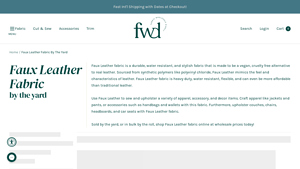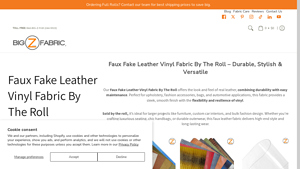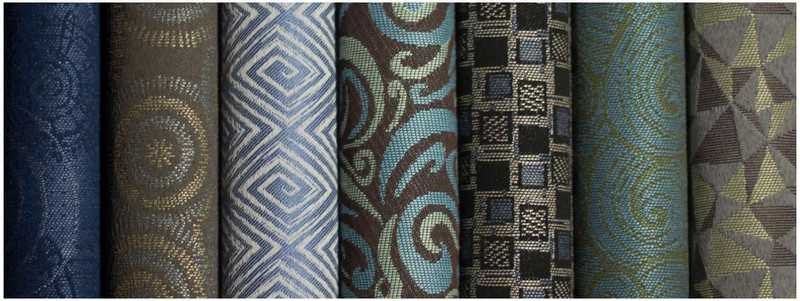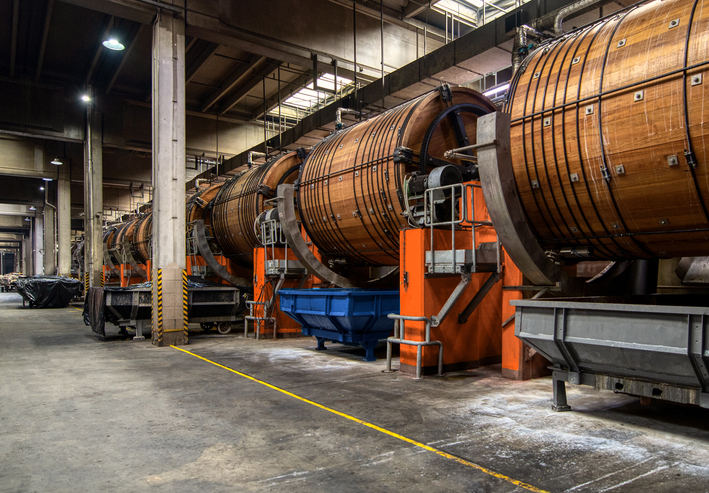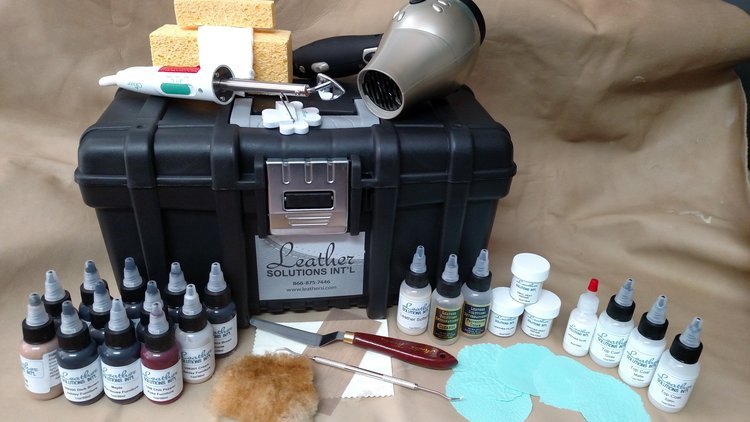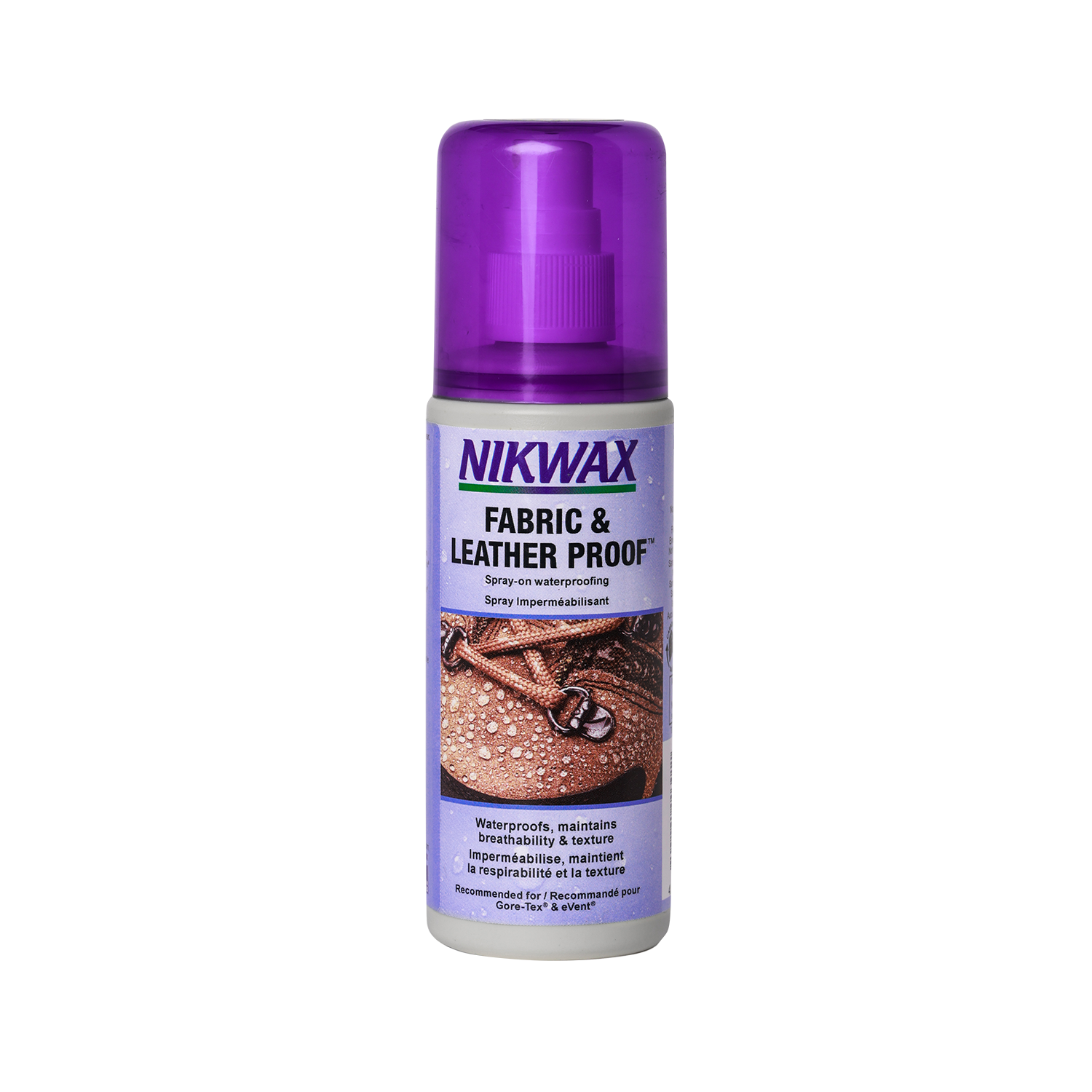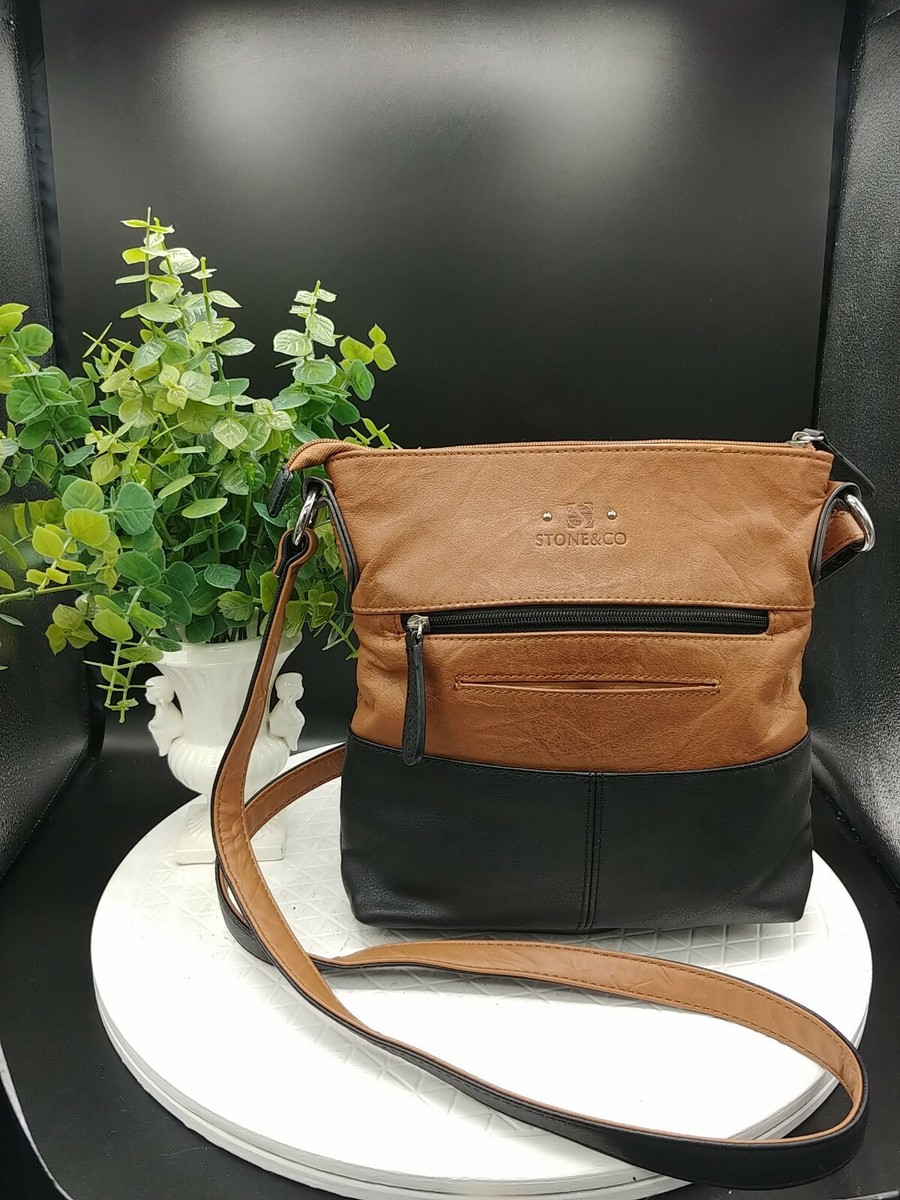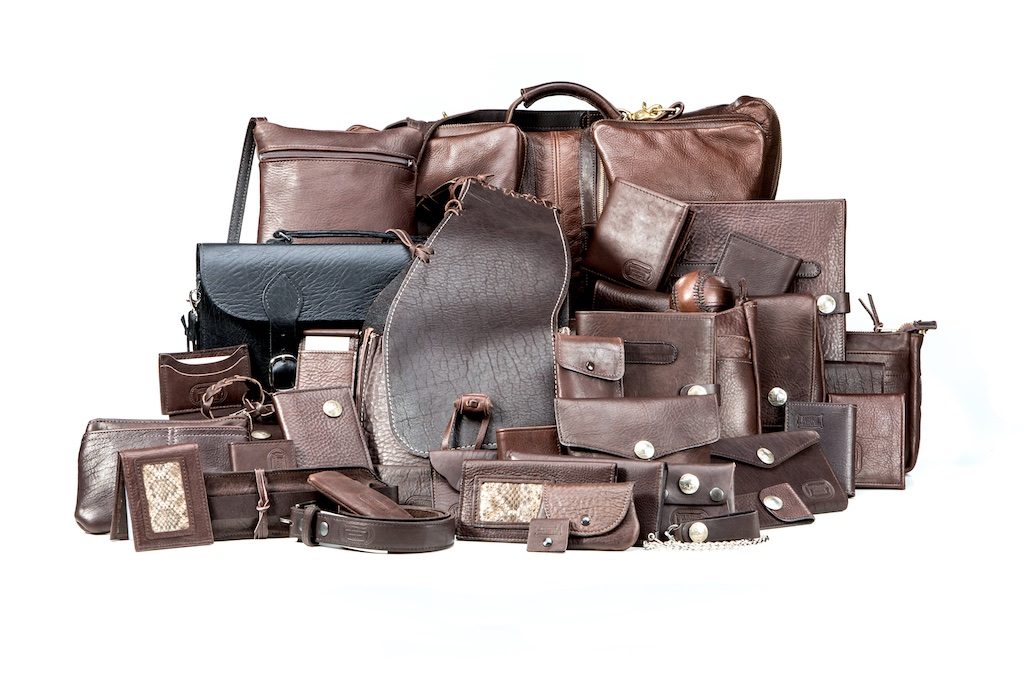Introduction: Navigating the Global Market for faux leather by the roll
The global market for faux leather by the roll presents a unique challenge for B2B buyers seeking to source high-quality, cost-effective materials. With the growing demand for sustainable and stylish alternatives to genuine leather, businesses in regions such as Africa, South America, the Middle East, and Europe are increasingly faced with the task of identifying reliable suppliers while navigating fluctuating prices and varying quality standards. This comprehensive guide is designed to empower international buyers by providing insights into the diverse types of faux leather available, their various applications, and essential supplier vetting strategies.
From understanding the nuances of PU and PVC faux leather to exploring their applications across industries such as fashion, upholstery, and automotive, this guide equips you with the knowledge needed to make informed purchasing decisions. We delve into critical factors such as cost considerations, shipping logistics, and potential sourcing pitfalls, ensuring that you are well-prepared to engage with suppliers effectively.
By leveraging the information presented in this guide, B2B buyers can confidently navigate the complexities of the faux leather market, optimizing their sourcing strategies to meet both budgetary constraints and quality expectations. Whether you’re based in Nigeria, Vietnam, or any other global market, this resource is your roadmap to successfully sourcing faux leather by the roll.
Table Of Contents
- Top 2 Faux Leather By The Roll Manufacturers & Suppliers List
- Introduction: Navigating the Global Market for faux leather by the roll
- Understanding faux leather by the roll Types and Variations
- Key Industrial Applications of faux leather by the roll
- 3 Common User Pain Points for ‘faux leather by the roll’ & Their Solutions
- Strategic Material Selection Guide for faux leather by the roll
- In-depth Look: Manufacturing Processes and Quality Assurance for faux leather by the roll
- Practical Sourcing Guide: A Step-by-Step Checklist for ‘faux leather by the roll’
- Comprehensive Cost and Pricing Analysis for faux leather by the roll Sourcing
- Alternatives Analysis: Comparing faux leather by the roll With Other Solutions
- Essential Technical Properties and Trade Terminology for faux leather by the roll
- Navigating Market Dynamics and Sourcing Trends in the faux leather by the roll Sector
- Frequently Asked Questions (FAQs) for B2B Buyers of faux leather by the roll
- Strategic Sourcing Conclusion and Outlook for faux leather by the roll
- Important Disclaimer & Terms of Use
Understanding faux leather by the roll Types and Variations
| Type Name | Key Distinguishing Features | Primary B2B Applications | Brief Pros & Cons for Buyers |
|---|---|---|---|
| PU Faux Leather | Made from polyurethane, offers a realistic leather look; water-resistant and easy to clean. | Fashion accessories, upholstery, automotive interiors. | Pros: Cost-effective, versatile colors. Cons: May not be as durable as genuine leather. |
| PVC Faux Leather | Constructed from polyvinyl chloride, often cheaper; available in various textures and finishes. | Bags, clothing, and budget furniture. | Pros: Low cost, easy to print on. Cons: Less breathable, can be less environmentally friendly. |
| Microfiber Faux Leather | Soft, suede-like texture; highly durable and resistant to wear and tear. | High-end fashion, upholstery, and automotive. | Pros: Luxurious feel, excellent durability. Cons: Higher cost compared to other faux leathers. |
| Eco-friendly Faux Leather | Made from recycled materials or plant-based sources; sustainable option. | Eco-conscious fashion, furniture, and automotive. | Pros: Environmentally friendly, innovative designs. Cons: Limited availability, potentially higher price point. |
| Stretch Faux Leather | Features elasticity for added comfort; ideal for fitted garments and accessories. | Activewear, tailored clothing, and bags. | Pros: Enhanced comfort and fit. Cons: May require specialized sewing techniques. |
What are the Characteristics of PU Faux Leather?
PU (Polyurethane) faux leather is a popular choice among B2B buyers due to its realistic appearance and versatility. This type is water-resistant, making it suitable for various applications, including fashion accessories and automotive interiors. When purchasing PU faux leather, buyers should consider factors such as thickness, color options, and ease of maintenance. Its affordability and availability in a wide range of colors make it an attractive option for fashion brands looking to balance quality and cost.
How Does PVC Faux Leather Compare in Terms of Cost and Applications?
PVC (Polyvinyl Chloride) faux leather is known for its economical pricing and diverse textures. It is often used in budget-conscious products such as bags, clothing, and furniture. While PVC can be printed on easily, its lack of breathability may deter some buyers, especially for applications requiring comfort. Buyers should weigh the cost benefits against potential durability issues, particularly in high-wear environments.
What Makes Microfiber Faux Leather a Premium Choice?
Microfiber faux leather stands out for its soft, suede-like texture and exceptional durability. It is often utilized in high-end fashion and automotive upholstery due to its luxurious feel. Buyers should consider the price point, as microfiber is typically more expensive than other faux leathers. However, its longevity and resistance to wear make it a worthwhile investment for businesses aiming for quality and comfort in their products.
Why Should B2B Buyers Consider Eco-friendly Faux Leather?
Eco-friendly faux leather appeals to businesses looking to enhance their sustainability efforts. Made from recycled or plant-based materials, this type offers a unique selling proposition for eco-conscious brands. While it may come at a higher price and limited availability, the growing demand for sustainable products makes it a compelling option. Buyers should evaluate their target market’s values to determine if eco-friendly faux leather aligns with their brand ethos.
What are the Benefits of Using Stretch Faux Leather in Fashion?
Stretch faux leather is designed for comfort and flexibility, making it ideal for activewear and tailored clothing. This variation allows for a better fit and ease of movement, which is essential for performance-oriented products. Buyers should consider the specific sewing techniques required for stretch materials, as they may differ from traditional faux leather. Ensuring compatibility with existing manufacturing processes is crucial for a smooth integration of stretch faux leather into product lines.
Key Industrial Applications of faux leather by the roll
| Industry/Sector | Specific Application of faux leather by the roll | Value/Benefit for the Business | Key Sourcing Considerations for this Application |
|---|---|---|---|
| Fashion and Apparel | Bag and accessory production | Cost-effective luxury look, durability, and ease of maintenance | Quality of material, color options, and stretch capability |
| Automotive | Upholstery for vehicle interiors | Enhanced aesthetics and comfort without high costs | Fire resistance, durability, and ease of cleaning |
| Furniture and Home Decor | Upholstery for sofas and chairs | Versatile design options and affordability | Thickness, color variety, and stain resistance |
| Marine | Boat interiors and upholstery | Weather resistance and aesthetic appeal | UV stability, water resistance, and material durability |
| Sports and Recreation | Equipment covers and protective gear | Lightweight yet strong, easy to clean | Tear resistance, color fastness, and customizability |
How is Faux Leather by the Roll Used in the Fashion and Apparel Industry?
In the fashion and apparel sector, faux leather by the roll is prominently used for producing bags and accessories. It provides an affordable alternative to genuine leather while maintaining a luxurious appearance. International buyers, particularly from regions like Africa and South America, often seek materials that are easy to work with, have a variety of colors, and offer durability. The ability to source in smaller rolls allows businesses to manage inventory effectively while meeting diverse design needs.
What are the Applications of Faux Leather in the Automotive Industry?
Faux leather by the roll is widely utilized in automotive upholstery, enhancing vehicle interiors with a stylish yet practical material. It delivers a premium look while being cost-effective and easier to maintain than traditional leather. Buyers from the Middle East and Europe, where automotive customization is popular, must consider factors such as fire resistance and durability to ensure compliance with safety standards, as well as the aesthetic appeal of the material.
How is Faux Leather Employed in Furniture and Home Decor?
In the furniture industry, faux leather is favored for upholstery on sofas and chairs. It offers a range of design options and is generally more affordable than real leather, appealing to budget-conscious consumers. B2B buyers from Europe and Africa should prioritize sourcing materials that are stain-resistant and easy to clean, as these attributes significantly enhance the longevity and usability of upholstered furniture in both residential and commercial settings.
What Role Does Faux Leather Play in the Marine Sector?
For marine applications, faux leather is used in boat interiors and upholstery, where it must withstand harsh environmental conditions. Its weather resistance and aesthetic appeal make it a popular choice among boat manufacturers. Buyers in regions with extensive marine activities, such as parts of Africa and the Middle East, should focus on the UV stability and water resistance of the faux leather to ensure long-term performance and minimal maintenance.
How is Faux Leather Utilized in Sports and Recreation?
Faux leather by the roll finds applications in sports and recreation for equipment covers and protective gear. Its lightweight nature combined with strength makes it ideal for various sports applications. B2B buyers need to consider sourcing options that offer tear resistance and color fastness, especially for products that are subject to wear and tear. Customizability is also a key factor, allowing brands to create unique designs that resonate with their target audience.
3 Common User Pain Points for ‘faux leather by the roll’ & Their Solutions
Scenario 1: Inconsistent Quality Across Rolls
The Problem: B2B buyers often encounter variability in the quality and texture of faux leather when ordering by the roll. This inconsistency can lead to significant production delays and increased costs, particularly for manufacturers relying on a uniform look and feel for their products, such as handbags or upholstery. Discrepancies in color, thickness, and overall durability between rolls can result in wasted materials and dissatisfied customers.
The Solution: To mitigate quality inconsistencies, it is essential to establish relationships with reputable suppliers known for their quality control processes. Before placing a large order, request samples from multiple batches to assess the material firsthand. When specifying your order, provide clear guidelines on color matching and material specifications, including thickness and stretch characteristics. Additionally, consider implementing a quality assurance protocol where each roll is inspected upon delivery for adherence to your standards. This proactive approach will help ensure that your production runs smoothly without unexpected surprises.
Scenario 2: Difficulty in Handling and Sewing Faux Leather
The Problem: Many B2B buyers, especially those new to working with faux leather, face challenges during the cutting, handling, and sewing processes. Faux leather can be slippery and difficult to work with, leading to misaligned seams, puckering, or even damage to the fabric itself. This can be particularly frustrating for businesses that require precise cuts and finishes for their products, such as apparel or furniture.
The Solution: To enhance handling and sewing experiences, invest in specialized tools and techniques tailored for faux leather. Use rotary cutters instead of traditional scissors to achieve cleaner edges and minimize fraying. Additionally, consider using a walking foot attachment on sewing machines to prevent the material from slipping during stitching. When sewing, use a needle designed specifically for thicker fabrics, and opt for a heavier thread to ensure durability. Moreover, it may be beneficial to practice on scrap pieces before commencing actual production runs, allowing your team to familiarize themselves with the material’s behavior and best practices.
Scenario 3: Managing Odors from Faux Leather Rolls
The Problem: A common concern among B2B buyers is the unpleasant odor that can emanate from faux leather rolls, which may arise from the manufacturing process or the materials used. This can be particularly problematic in industries such as fashion or upholstery, where the final product is expected to be free of any distracting scents. Buyers must navigate this issue to maintain product quality and customer satisfaction.
The Solution: To address odor issues, it is advisable to allow faux leather rolls to air out before cutting or using them in production. Unroll the material and place it in a well-ventilated area for at least 24 hours. If the odor persists, consider using fabric refresher sprays that are safe for synthetic materials. Additionally, when sourcing, inquire about the types of dyes and treatments used in the manufacturing process, as some can contribute to stronger odors. Building relationships with suppliers who prioritize low-odor manufacturing processes can also be beneficial, ensuring that the materials you receive are more pleasant for your end-users.
Strategic Material Selection Guide for faux leather by the roll
What Are the Key Materials for Faux Leather by the Roll?
When selecting faux leather by the roll for various applications, understanding the different materials available is crucial for international B2B buyers. Below, we analyze four common materials used in faux leather production: Polyurethane (PU), Polyvinyl Chloride (PVC), Microfiber, and Recycled Materials. Each material has unique properties, advantages, and limitations that can significantly impact the end product’s performance and suitability.
How Does Polyurethane (PU) Perform in Faux Leather Applications?
Polyurethane (PU) is one of the most popular materials for faux leather due to its versatility and performance. PU faux leather exhibits excellent durability and flexibility, making it suitable for a variety of applications, including upholstery, fashion, and accessories. It can withstand moderate temperature fluctuations and has good resistance to wear and tear.
Pros: PU is lightweight, easy to clean, and has a soft texture that closely mimics genuine leather. It is also available in a wide range of colors and finishes, allowing for greater design flexibility.
Cons: While PU is generally more durable than PVC, it can be more expensive. Additionally, it may not perform as well in extreme temperatures or in environments with high humidity.
Impact on Application: PU faux leather is compatible with various media, making it ideal for digital printing and dyeing processes. However, buyers should consider the specific end-use environment to ensure optimal performance.
What About Polyvinyl Chloride (PVC) for Faux Leather Products?
Polyvinyl Chloride (PVC) is another widely used material in faux leather production. It is known for its robustness and resistance to moisture, making it suitable for outdoor applications and environments where exposure to water is a concern.
Pros: PVC is cost-effective and highly durable, offering good resistance to abrasion and chemicals. It is also easy to clean, making it a popular choice for products like automotive interiors and outdoor furniture.
Cons: However, PVC can be less flexible than PU, which may limit its application in fashion items requiring a softer touch. Additionally, PVC is less breathable, which can lead to discomfort in clothing items.
Impact on Application: PVC is often used in applications where water resistance is essential, such as in marine upholstery and outdoor gear. Buyers should ensure compliance with environmental regulations, as PVC can release harmful chemicals during production and disposal.
How Does Microfiber Compare in Faux Leather Selection?
Microfiber is a synthetic material made from finely woven fibers, often used as a premium alternative to traditional faux leather. It is known for its softness, durability, and breathability.
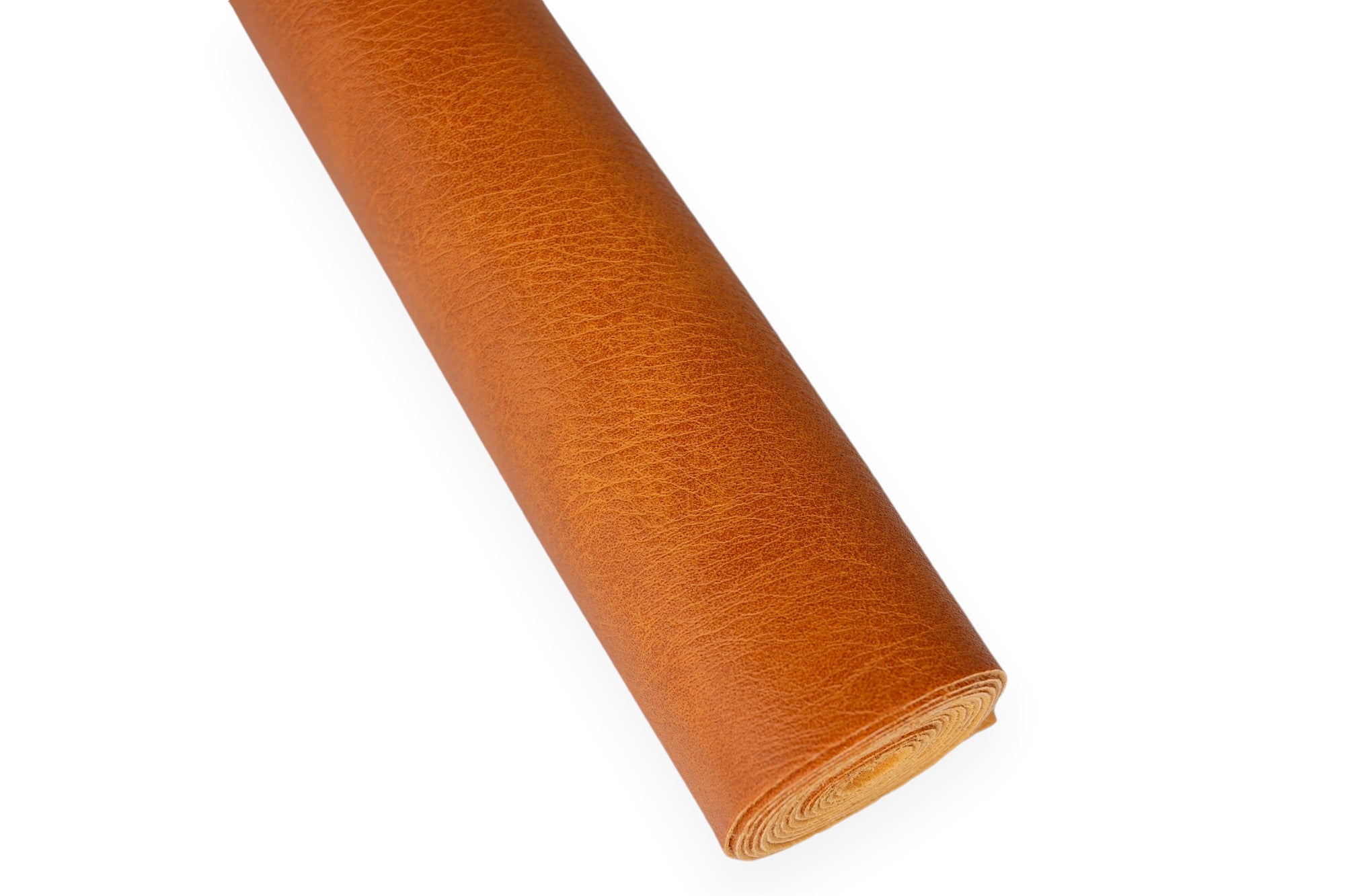
Illustrative image related to faux leather by the roll
Pros: Microfiber faux leather is highly resistant to stains and easy to clean. It also offers a luxurious feel and appearance, making it suitable for high-end fashion and upholstery.
Cons: The primary drawback of microfiber is its higher cost compared to PU and PVC. Additionally, it may require more complex manufacturing processes, which can increase production time.
Impact on Application: Microfiber is compatible with various dyeing techniques and can be used in applications where aesthetics are paramount. Buyers should consider the target market’s preferences for quality and sustainability.
What Role Do Recycled Materials Play in Faux Leather Production?
Recycled materials, such as recycled polyester or polyurethane, are increasingly being used in faux leather production to promote sustainability. These materials can significantly reduce environmental impact while still providing desirable properties.
Pros: Using recycled materials can appeal to environmentally conscious consumers and brands. They often maintain similar performance characteristics to their virgin counterparts, offering good durability and flexibility.
Cons: The availability and consistency of recycled materials can be a challenge, potentially affecting supply chains. Additionally, the cost may vary based on sourcing and processing methods.
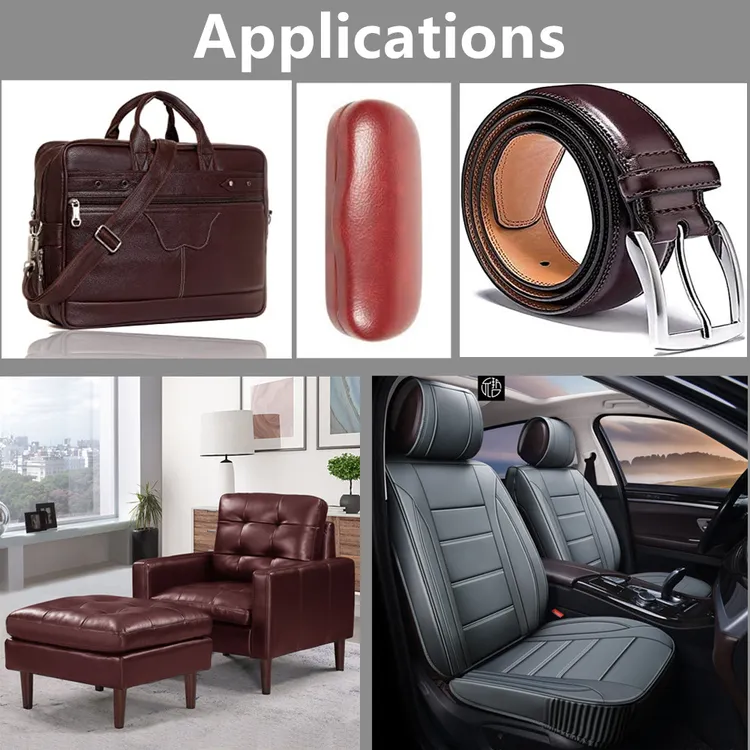
Illustrative image related to faux leather by the roll
Impact on Application: Recycled faux leather can be used in a wide range of applications, from fashion to upholstery. Buyers should ensure that the materials meet international compliance standards, such as those set by ASTM or DIN.
Summary Table of Faux Leather Materials
| Material | Typical Use Case for faux leather by the roll | Key Advantage | Key Disadvantage/Limitation | Relative Cost (Low/Med/High) |
|---|---|---|---|---|
| Polyurethane (PU) | Fashion, upholstery, accessories | Soft texture, good flexibility | Higher cost, less performance in extreme conditions | Medium |
| Polyvinyl Chloride (PVC) | Automotive interiors, outdoor furniture | Cost-effective, moisture-resistant | Less flexible, less breathable | Low |
| Microfiber | High-end fashion, luxury upholstery | Luxurious feel, stain-resistant | Higher cost, complex manufacturing | High |
| Recycled Materials | Eco-friendly fashion, sustainable products | Environmentally friendly, durable | Availability issues, variable cost | Medium |
This strategic material selection guide serves as a valuable resource for international B2B buyers, particularly those from Africa, South America, the Middle East, and Europe, enabling informed decisions when sourcing faux leather by the roll.
In-depth Look: Manufacturing Processes and Quality Assurance for faux leather by the roll
What Are the Key Stages in the Manufacturing Process of Faux Leather by the Roll?
The manufacturing process of faux leather involves several critical stages that ensure the final product meets aesthetic and functional standards. Understanding these stages helps B2B buyers make informed decisions when sourcing materials for their projects.
Material Preparation: How Is Faux Leather Fabric Initially Created?
The first stage in the production of faux leather involves the selection and preparation of raw materials. Typically, polyurethane (PU) or polyvinyl chloride (PVC) is used as the base material, chosen for its durability and versatility. The process begins with the compounding of these materials, where they are mixed with additives such as plasticizers, stabilizers, and colorants to achieve the desired properties, including flexibility, strength, and color.
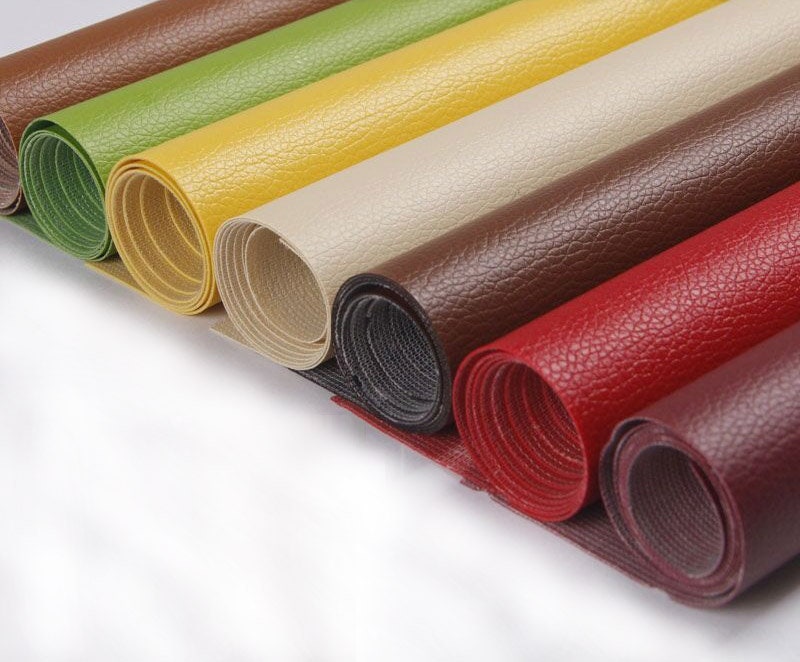
Illustrative image related to faux leather by the roll
Once the materials are compounded, they undergo a process called calendaring. In this step, the compound is passed through a series of rollers to create sheets of varying thicknesses. This stage is crucial because the thickness of the faux leather directly impacts its application, whether for upholstery, fashion, or accessories.
Forming: How Is Faux Leather Shaped and Textured?
After calendaring, the faux leather sheets are subjected to forming processes. This can include embossing, where patterns or textures are pressed into the surface to mimic the look and feel of genuine leather. Techniques such as digital printing may also be employed to create unique designs or color patterns, enhancing the aesthetic appeal.
Additionally, the sheets may undergo a coating process to enhance durability and provide water resistance. This is particularly important for applications in harsh environments or where moisture exposure is likely. The forming stage ensures that the faux leather not only looks appealing but also meets specific functional requirements.
Assembly: What Techniques Are Used to Assemble Faux Leather Products?
Once the faux leather has been formed, it is ready for assembly. This stage often involves cutting the sheets into specific dimensions and sewing them into finished products, such as bags, upholstery, or garments. Modern manufacturing facilities utilize both manual and automated sewing techniques, ensuring precision and efficiency.
For B2B buyers, understanding the assembly techniques is critical, as it affects the quality and durability of the final product. Manufacturers may offer additional services such as reinforcement with interfacing for items that require extra strength, such as bags and upholstery.
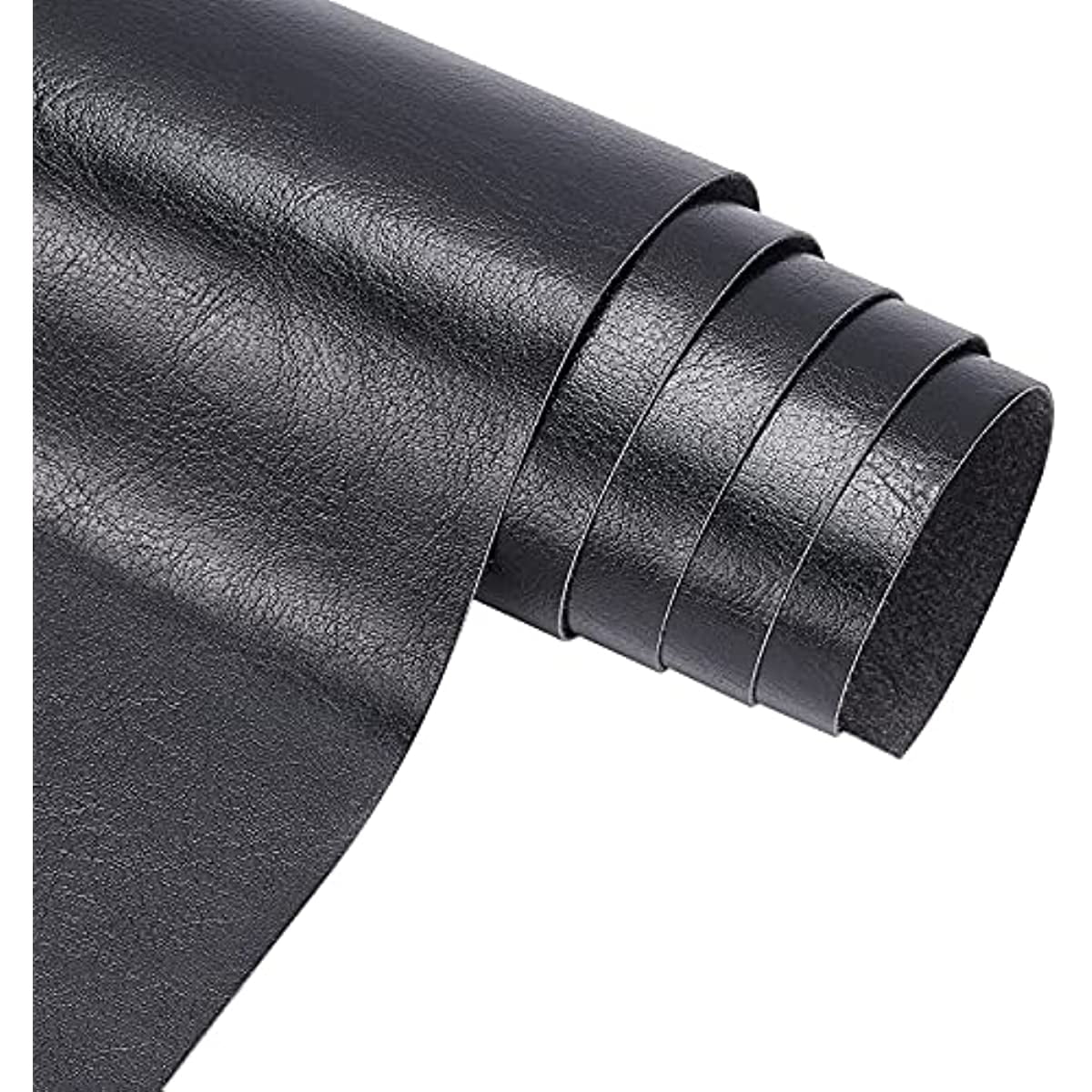
Illustrative image related to faux leather by the roll
Finishing: How Is Faux Leather Treated for Final Use?
The final stage of the manufacturing process is finishing, where the faux leather undergoes treatments to enhance its performance characteristics. This can include applying protective coatings that improve scratch resistance, UV stability, and overall longevity.
Additionally, quality control checks are performed during this stage to ensure that the faux leather meets all specified standards before being packaged for shipment. This comprehensive finishing process helps in providing a product that aligns with the expectations of B2B buyers.
What Quality Control Measures Are Essential for Faux Leather Production?
Quality assurance is paramount in the production of faux leather. This ensures that the product meets international and industry-specific standards, which is particularly relevant for B2B buyers operating across diverse markets.
What International Standards Should Faux Leather Manufacturers Comply With?
Manufacturers of faux leather are encouraged to adhere to international standards such as ISO 9001, which focuses on quality management systems. Compliance with this standard indicates that a manufacturer has established a consistent quality assurance process throughout their operations.
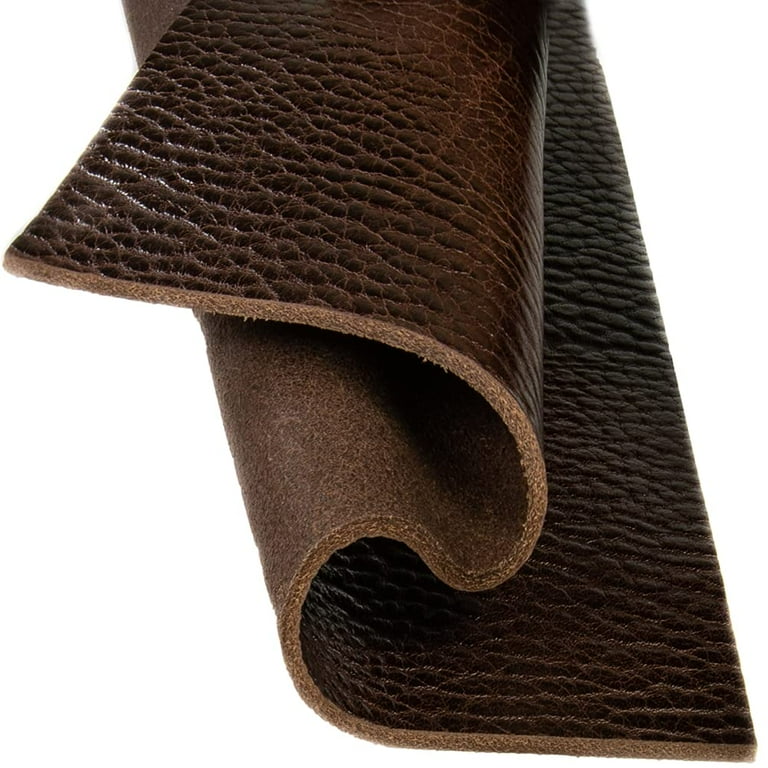
Illustrative image related to faux leather by the roll
In addition to ISO 9001, specific certifications may apply depending on the intended use of the faux leather. For instance, CE marking is relevant for products sold in the European Economic Area, ensuring compliance with safety, health, and environmental protection standards.
What Are the Key Quality Control Checkpoints in Faux Leather Manufacturing?
Quality control in faux leather production typically involves several checkpoints, including:
-
Incoming Quality Control (IQC): This phase assesses the quality of raw materials before production begins. Ensuring that the input materials meet required specifications is essential for the integrity of the final product.
-
In-Process Quality Control (IPQC): During the manufacturing process, IPQC involves monitoring various parameters such as temperature, pressure, and material consistency. This helps in identifying potential issues early in the production cycle.
-
Final Quality Control (FQC): After the production is completed, FQC involves thorough inspections of the finished product. This can include checking for defects, assessing color consistency, and verifying that the faux leather meets specified physical properties.
How Can B2B Buyers Verify Supplier Quality Control Practices?
B2B buyers should adopt a proactive approach to verify the quality control practices of their suppliers. This can involve:
-
Audits: Conducting on-site audits allows buyers to assess the manufacturing processes, quality control measures, and overall operational standards of the supplier.
-
Requesting Quality Reports: Suppliers should provide detailed quality reports that outline their testing methods, results, and compliance with relevant standards. This documentation serves as evidence of the supplier’s commitment to quality.
-
Third-Party Inspections: Engaging third-party inspection services can provide an unbiased assessment of the supplier’s quality control practices. These services can conduct random checks on the production process and finished products.
What Are the Unique Quality Control Considerations for International B2B Buyers?
For international B2B buyers, particularly those in regions such as Africa, South America, the Middle East, and Europe, additional nuances in quality control must be considered. Variations in regulatory requirements, market expectations, and cultural differences can impact product acceptance.
B2B buyers should familiarize themselves with local regulations regarding the import of faux leather products, including any specific certifications required for their markets. Moreover, understanding the cultural preferences for faux leather products in different regions can help buyers make informed decisions about design and functionality.
In conclusion, the manufacturing processes and quality assurance measures for faux leather by the roll are intricate and multifaceted. By comprehensively understanding these aspects, B2B buyers can ensure they source high-quality materials that meet their specific needs and comply with international standards.
Practical Sourcing Guide: A Step-by-Step Checklist for ‘faux leather by the roll’
Introduction
Navigating the procurement of faux leather by the roll can be a complex process, especially for international B2B buyers. This guide provides a step-by-step checklist designed to streamline your sourcing efforts, ensuring you make informed decisions that align with your business needs and industry standards.
Step 1: Define Your Technical Specifications
Establishing clear technical specifications is crucial for identifying the right faux leather for your applications. Consider factors such as thickness, material composition (e.g., PU or PVC), and any specific performance characteristics like water resistance or stretch. This clarity will help you communicate effectively with suppliers and ensure you receive products that meet your requirements.
Step 2: Research Potential Suppliers
Conduct thorough research to identify reputable suppliers who specialize in faux leather. Look for suppliers with a strong track record and positive reviews from other businesses. Utilize online platforms, industry directories, and trade shows to gather a list of potential partners, ensuring that they have experience in your specific market region.
Step 3: Evaluate Supplier Certifications
Before proceeding with a supplier, verify their certifications and compliance with international quality standards. This may include ISO certifications, environmental compliance, and adherence to safety regulations. Ensuring that your supplier meets these standards not only protects your business but also enhances your brand’s reputation.
Step 4: Request Samples for Quality Assessment
Once you have shortlisted suppliers, request samples of their faux leather products. Inspect these samples for quality, texture, and color accuracy. Pay attention to how the material behaves under different conditions, such as sewing or exposure to moisture, as this will provide insight into its suitability for your intended applications.
Step 5: Negotiate Terms and Pricing
Engage in negotiations with your selected suppliers to establish favorable terms. Discuss pricing, payment terms, and shipping options while ensuring transparency about any additional costs that may arise. A well-negotiated contract can lead to better margins and long-term relationships, which are essential for sustained business growth.
Step 6: Assess Production Capabilities and Lead Times
Inquire about the supplier’s production capabilities and lead times. Understanding their capacity to fulfill your orders in a timely manner is vital, especially if you operate within tight deadlines. Ask for information on their manufacturing processes and whether they can accommodate larger orders if your needs expand.
Step 7: Establish a Communication Plan
Develop a robust communication plan to facilitate smooth interactions with your supplier. Regular updates and check-ins can help address any concerns proactively, ensuring that both parties are aligned throughout the production and delivery phases. Effective communication is key to building a successful partnership and mitigating potential issues.
By following this checklist, you can navigate the complexities of sourcing faux leather by the roll effectively, ensuring that you secure high-quality materials that meet your business needs.
Comprehensive Cost and Pricing Analysis for faux leather by the roll Sourcing
What are the Key Cost Components in Sourcing Faux Leather by the Roll?
When sourcing faux leather by the roll, understanding the cost structure is crucial for making informed purchasing decisions. The primary cost components include:
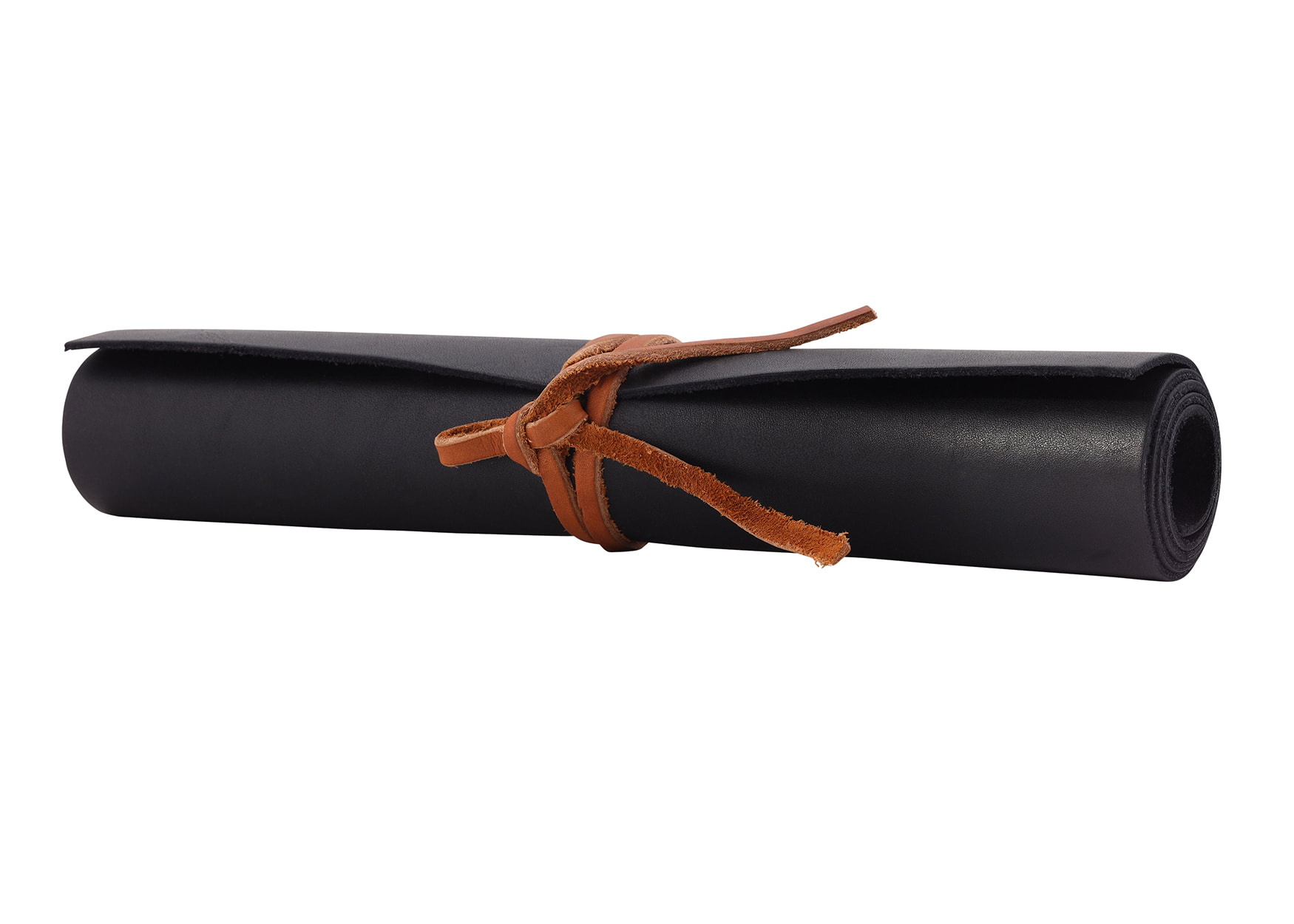
Illustrative image related to faux leather by the roll
-
Materials: The primary material used in faux leather production is polyurethane (PU) or polyvinyl chloride (PVC). The choice of material significantly impacts the overall cost. Higher-quality materials often yield better durability and aesthetics but come at a premium price.
-
Labor: Labor costs vary by region, reflecting local wage rates and manufacturing practices. Countries with lower labor costs may offer more competitive pricing, but this can also affect the quality and consistency of the product.
-
Manufacturing Overhead: This includes costs related to factory maintenance, utilities, and administrative expenses. Efficient factories can reduce overhead costs, which can lead to lower prices for buyers.
-
Tooling: Initial costs for molds and machinery are significant, especially for custom designs. Tooling costs are amortized over production runs, so larger orders can benefit from lower per-unit costs.
-
Quality Control (QC): Ensuring the faux leather meets specified standards involves inspection and testing. While QC adds to costs, it is essential for maintaining product quality and minimizing returns or defects.
-
Logistics: Shipping costs can vary widely based on distance, mode of transport, and shipping terms. International buyers should consider these factors, as they can significantly impact total costs.
-
Margin: Supplier margins will vary based on market competition, brand reputation, and the uniqueness of the product. Understanding the margin can help buyers assess whether the price reflects the value offered.
How Do Price Influencers Affect Sourcing Faux Leather?
Several factors influence the pricing of faux leather, particularly for international B2B buyers:
-
Volume/MOQ: Minimum order quantities (MOQ) can affect pricing. Suppliers often offer discounts for larger orders, which can lead to significant savings for buyers who can commit to higher volumes.
-
Specifications and Customization: Customized colors, patterns, or finishes can raise costs. Buyers should weigh the benefits of customization against the potential for increased expenses.
-
Material Quality and Certifications: Higher-quality faux leather often comes with certifications that guarantee compliance with safety and environmental standards. While these products may cost more upfront, they can reduce long-term costs related to durability and compliance.
-
Supplier Factors: Supplier reliability, experience, and reputation can also affect pricing. Established suppliers may charge higher prices due to their quality assurance practices and customer service.
-
Incoterms: The agreed-upon shipping terms can significantly influence total costs. Buyers should understand their responsibilities for shipping, insurance, and tariffs based on the Incoterms selected.
What Negotiation Tips Can Help Buyers Secure Better Pricing?
To achieve cost-efficiency when sourcing faux leather, consider the following negotiation strategies:
-
Build Relationships: Establishing a good relationship with suppliers can lead to better pricing and terms. Long-term partnerships often result in preferential treatment and pricing.
-
Be Transparent About Needs: Clearly communicate your volume requirements and any specific needs. Suppliers may be willing to negotiate better pricing if they understand your business needs.
-
Assess Total Cost of Ownership (TCO): Evaluate not just the purchase price but the total cost, including shipping, potential defects, and the longevity of the material. This comprehensive view can justify higher upfront costs for better quality.
-
Leverage Market Research: Understanding market trends and competitor pricing can provide leverage during negotiations. Buyers should be aware of industry standards and supplier capabilities.
-
Be Prepared for Flexibility: If a supplier cannot meet your price, consider negotiating other terms, such as payment schedules or additional services, to create a win-win situation.
Why is Understanding Pricing Nuances Essential for International Buyers?
For international buyers, particularly from regions like Africa, South America, the Middle East, and Europe, understanding pricing nuances is vital. Currency fluctuations, tariffs, and import regulations can all affect the final costs. Additionally, cultural differences in negotiation practices may require a tailored approach to discussions.
Buyers should also consider the potential impact of logistics and shipping delays, especially when sourcing from overseas. Engaging local experts or consultants familiar with international trade can enhance the sourcing process and mitigate risks associated with cross-border transactions.
Disclaimer on Indicative Prices
The prices mentioned in sourcing faux leather by the roll can vary widely based on market conditions, supplier negotiations, and specific order requirements. Buyers are encouraged to conduct thorough market research and obtain multiple quotes to ensure competitive pricing and value for their investment.
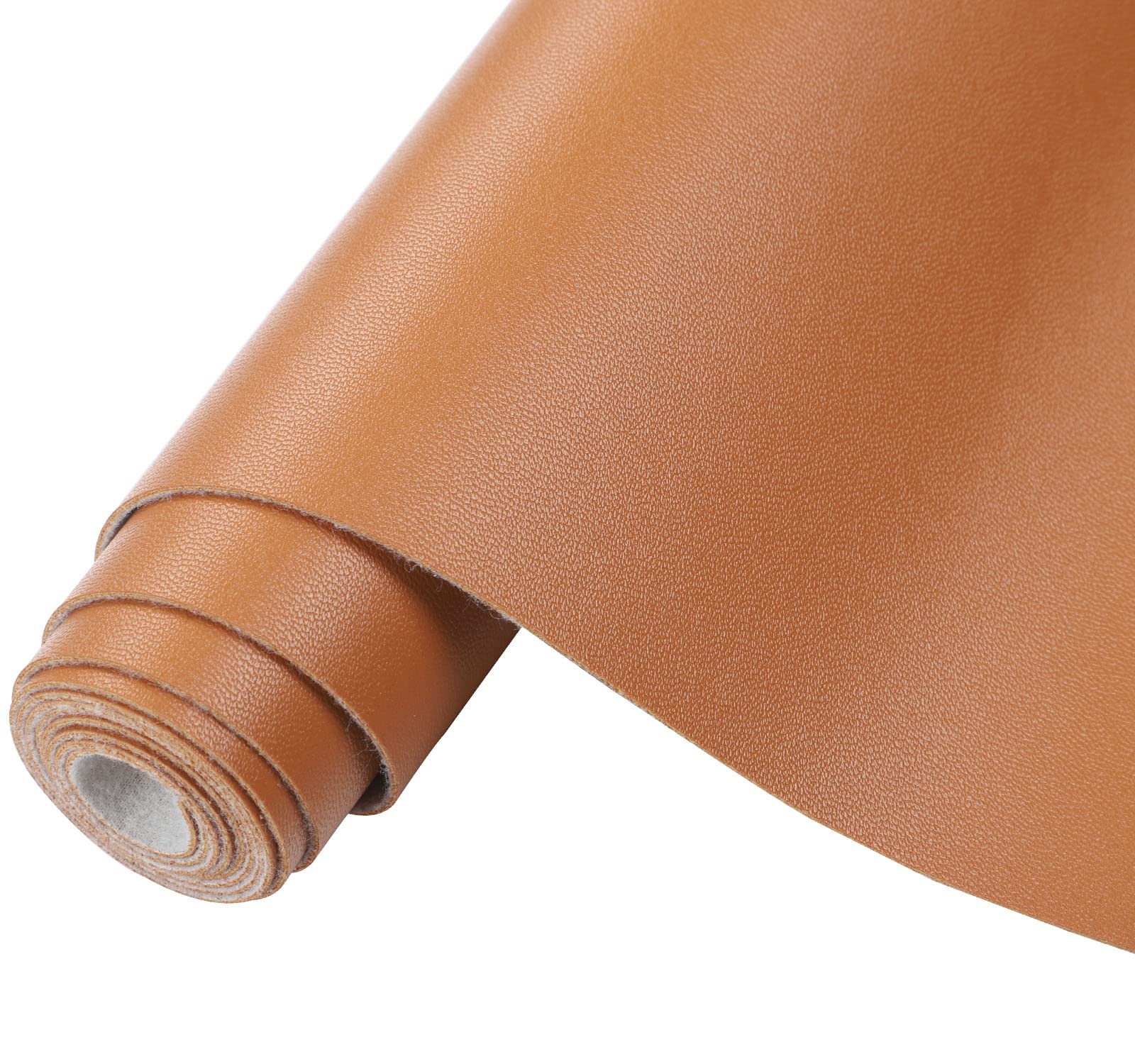
Illustrative image related to faux leather by the roll
Alternatives Analysis: Comparing faux leather by the roll With Other Solutions
Understanding Alternatives in Faux Leather Solutions
In the competitive market of materials for fashion and upholstery, faux leather by the roll stands as a popular choice among manufacturers and designers. However, buyers should consider various alternatives to determine the best fit for their specific applications. This analysis compares faux leather by the roll with two viable alternatives: genuine leather and PVC (polyvinyl chloride) fabric. Each option has unique characteristics that can influence purchasing decisions based on performance, cost, ease of implementation, maintenance, and best use cases.
Comparison Table
| Comparison Aspect | Faux Leather By The Roll | Genuine Leather | PVC Fabric |
|---|---|---|---|
| Performance | Durable, water-resistant, and easy to sew | Highly durable, breathable, and ages well | Good water resistance, but less breathable |
| Cost | Affordable ($16.99 per roll) | Expensive, typically $50+ per square meter | Low-cost alternative (around $10 per yard) |
| Ease of Implementation | Easy to work with, suitable for various projects | Requires specialized tools and techniques | Simple to cut and sew, but may need special adhesives |
| Maintenance | Low maintenance, easy to clean | Requires conditioning and careful maintenance | Easy to clean but may degrade over time |
| Best Use Case | Ideal for fashion items, bags, and upholstery | Best for high-end products, furniture, and luxury items | Suitable for budget-conscious projects, outdoor use, and crafts |
Detailed Breakdown of Alternatives
Genuine Leather
Genuine leather is a traditional choice that offers unmatched durability and a luxurious feel. It is breathable, allowing for comfort in wearables, and develops a unique patina over time, enhancing its aesthetic appeal. However, the high cost and the need for special care—such as conditioning and avoiding water—can deter some buyers. Additionally, working with genuine leather often requires more advanced sewing techniques and tools, making it less accessible for smaller manufacturers or hobbyists.
PVC Fabric
PVC fabric serves as a low-cost alternative to faux leather, providing good water resistance and a variety of colors and textures. Its affordability makes it appealing for budget-conscious projects, particularly in outdoor applications or crafts. However, PVC lacks the breathability and longevity of both faux leather and genuine leather, which can lead to discomfort in wearable applications. While it is easy to cut and sew, it may require special adhesives to ensure durability, particularly in high-stress areas.
Conclusion: How to Choose the Right Solution for Your Needs
Selecting the right material depends on various factors, including budget constraints, application requirements, and desired aesthetics. Faux leather by the roll offers a cost-effective and versatile solution suitable for a range of applications, making it an excellent choice for many B2B buyers. However, if your project demands luxury and durability, investing in genuine leather might be worthwhile. Conversely, for those seeking an economical option, PVC fabric can provide satisfactory results for less demanding applications. Understanding these alternatives will empower buyers to make informed decisions tailored to their specific needs.
Essential Technical Properties and Trade Terminology for faux leather by the roll
What Are the Key Technical Properties of Faux Leather by the Roll?
When sourcing faux leather by the roll, understanding its technical properties is crucial for making informed purchasing decisions. Here are several key specifications that B2B buyers should consider:
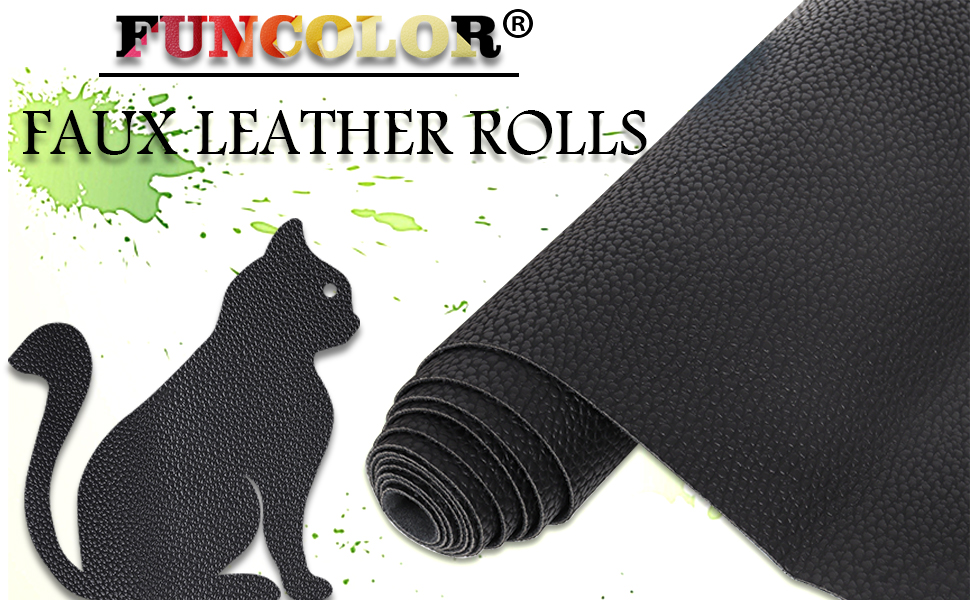
Illustrative image related to faux leather by the roll
-
Material Composition
Faux leather is typically made from polyurethane (PU) or polyvinyl chloride (PVC). PU is favored for its softness and breathability, making it ideal for apparel and upholstery. PVC, while more durable and water-resistant, can be less flexible. Knowing the material composition helps buyers assess the product’s suitability for specific applications, from fashion to automotive interiors. -
Thickness
The thickness of faux leather is usually measured in millimeters (mm). Common thicknesses range from 0.5 mm to 2.0 mm, with 0.9 mm being a standard choice for many applications. Thicker materials may offer enhanced durability and a more substantial feel, which can be important for products that experience wear and tear. Buyers should match the thickness with their end-use requirements to ensure optimal performance. -
Width and Length Tolerance
Faux leather rolls come in various widths, typically ranging from 54 inches to 60 inches, with length tolerances often around +/- 1 inch. Understanding these tolerances is vital for planning production runs and ensuring consistency across fabric cuts. Accurate measurements help avoid costly material waste and production delays. -
Stretchability
Many faux leathers exhibit a one-way stretch, which is essential for applications that require flexibility, such as clothing and bags. The ability to stretch without distorting the material ensures that products maintain their shape and integrity under stress. Buyers should assess the stretch characteristics to ensure they meet the functional needs of their designs. -
Color Fastness
Color fastness refers to the fabric’s resistance to fading when exposed to light, washing, or rubbing. It is measured using standardized tests, such as the AATCC test. Products with high color fastness are more desirable for end products that will be exposed to sunlight or frequent washing, as they retain their aesthetic appeal longer. -
Flame Resistance
Some faux leathers are treated to be flame-retardant, which is crucial for applications in upholstery and automotive interiors. Buyers should inquire about the compliance with safety standards, as this can influence marketability and regulatory approvals in various regions.
What Are Common Trade Terms Used in the Faux Leather Industry?
In addition to technical properties, familiarity with industry jargon is essential for smooth transactions and negotiations. Here are several common trade terms relevant to faux leather sourcing:
-
OEM (Original Equipment Manufacturer)
This term refers to companies that produce parts or products that are marketed by another company under its brand name. In the faux leather industry, an OEM might supply fabric for a brand’s handbags or upholstery. Understanding OEM relationships helps buyers identify potential partnerships and streamline their supply chain. -
MOQ (Minimum Order Quantity)
MOQ indicates the smallest amount of product a supplier is willing to sell. This term is crucial for B2B buyers to understand their budget constraints and production needs. Knowing the MOQ can help buyers negotiate better terms or decide if a supplier fits their purchasing strategy. -
RFQ (Request for Quotation)
An RFQ is a formal document sent to suppliers to request pricing for specific quantities of faux leather. It’s an essential tool for comparing offers and establishing a basis for negotiation. A well-structured RFQ helps streamline the procurement process and ensures clarity in specifications. -
Incoterms (International Commercial Terms)
These are standardized terms used in international trade to define the responsibilities of buyers and sellers regarding shipping, insurance, and tariffs. Familiarity with Incoterms like FOB (Free on Board) or CIF (Cost, Insurance, and Freight) helps buyers understand their liabilities and costs associated with transportation. -
Lead Time
Lead time refers to the time it takes from placing an order to receiving the product. This timeframe can vary based on production schedules, shipping methods, and supplier capabilities. Understanding lead times is essential for inventory management and planning production schedules. -
Certification Standards
These are industry-specific quality benchmarks that faux leather products may need to meet, such as ISO or OEKO-TEX certifications. Certifications ensure that the materials comply with environmental and safety regulations, providing assurance to buyers about the quality and sustainability of their products.
Being informed about these technical properties and trade terms can significantly enhance the decision-making process for B2B buyers in the faux leather market, ensuring they select the right materials for their needs while navigating the complexities of international trade.
Navigating Market Dynamics and Sourcing Trends in the faux leather by the roll Sector
What Are the Current Market Dynamics and Key Trends in the Faux Leather by the Roll Sector?
The faux leather by the roll market is experiencing significant growth driven by a combination of consumer preferences for sustainable materials and the rising costs associated with genuine leather. As international B2B buyers, particularly from regions such as Africa, South America, the Middle East, and Europe, seek cost-effective alternatives without compromising on aesthetics or quality, faux leather has emerged as a preferred choice. Key trends include the increasing adoption of advanced manufacturing technologies, such as digital printing and automated cutting, which enhance efficiency and customization options for businesses.
Moreover, the market is witnessing a surge in demand for multifunctional faux leather products that cater to diverse applications—from fashion and upholstery to automotive interiors. The rise of e-commerce platforms has also transformed sourcing dynamics, allowing buyers to easily access a broader range of suppliers and materials. With the acceleration of globalization, international buyers can leverage competitive pricing and innovative designs from manufacturers across different regions, including emerging markets like Vietnam and Nigeria.
How Is Sustainability and Ethical Sourcing Shaping the Faux Leather Market?
Sustainability has become a pivotal factor in the sourcing strategies of B2B buyers in the faux leather sector. The environmental impact of traditional leather production, which is resource-intensive and often involves harmful chemicals, has prompted businesses to prioritize eco-friendly alternatives. Faux leather, particularly those made from recycled or bio-based materials, offers a sustainable solution that aligns with the growing demand for environmentally responsible products.
Ethical sourcing practices are also gaining traction, with buyers increasingly scrutinizing supply chains to ensure compliance with labor standards and environmental regulations. Certifications such as Global Recycled Standard (GRS) and OEKO-TEX® provide assurances of sustainable practices and product safety, making them crucial for B2B transactions. By investing in suppliers who uphold these standards, businesses can enhance their brand reputation and appeal to a conscientious consumer base that values sustainability.
What Is the Historical Context of Faux Leather Development in the B2B Sector?
The evolution of faux leather can be traced back to the early 20th century, with its initial use as a cost-effective alternative to genuine leather. Initially, materials like rubber and vinyl dominated the market, but advancements in technology have led to the development of more sophisticated options, such as polyurethane (PU) and thermoplastic polyurethane (TPU). These modern materials closely mimic the texture and durability of real leather while offering additional benefits, such as easier maintenance and a lower environmental footprint.
As the global market for faux leather expands, particularly among B2B buyers, understanding this historical context is essential for recognizing the ongoing innovations and trends shaping the future of faux leather by the roll. The industry’s shift towards sustainable practices and ethical sourcing reflects a broader commitment to environmental stewardship and social responsibility, which will continue to influence purchasing decisions in the years to come.
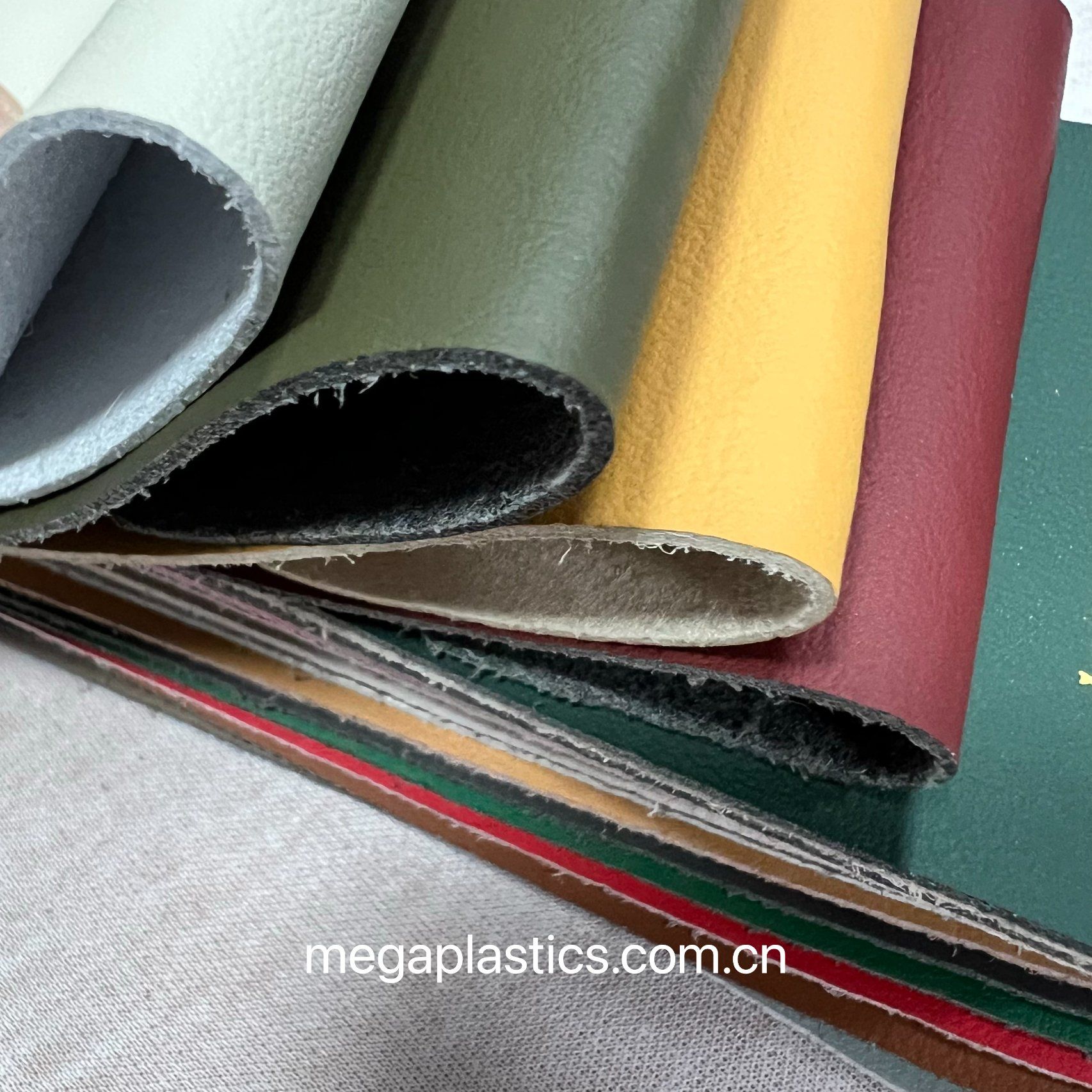
Illustrative image related to faux leather by the roll
Frequently Asked Questions (FAQs) for B2B Buyers of faux leather by the roll
-
How can I ensure the quality of faux leather before purchasing?
To ensure the quality of faux leather, request samples from potential suppliers. Evaluate the material’s texture, thickness, and durability by performing basic tests, such as stretching and bending. Additionally, inquire about the manufacturing process, including the types of raw materials used and any certifications they might have, such as ISO or Oeko-Tex. Establish clear quality assurance measures in your purchase agreement, including specifications and acceptable tolerances, to safeguard your investment. -
What are the key factors to consider when selecting a supplier for faux leather?
When selecting a supplier, assess their industry experience, production capacity, and reputation. Look for suppliers that have a proven track record of delivering high-quality products on time. Request references or case studies from other B2B clients to gauge their reliability. Additionally, verify their compliance with international trade regulations and environmental standards, as this can impact your brand’s image and sustainability efforts. -
What is the minimum order quantity (MOQ) for faux leather rolls?
MOQs for faux leather rolls can vary significantly based on the supplier and the specific product. Typically, MOQs range from 50 to 500 meters, depending on the customization and color options you choose. Discuss your specific needs with potential suppliers to negotiate MOQs that align with your purchasing strategy. Be prepared to adjust your order or pay a premium for smaller quantities if necessary. -
How can I customize faux leather products for my brand?
Customization options for faux leather include color, texture, and even printed designs. Many suppliers offer services such as embossing or debossing your logo onto the material. To initiate customization, communicate your design ideas clearly and provide any necessary artwork files. Ensure that you understand the costs associated with customization and lead times, as these can vary based on the complexity of the request. -
What are common payment terms for international faux leather purchases?
Payment terms in international trade often vary by supplier but typically include options such as upfront deposits (often 30-50%) with the balance due upon delivery or via letters of credit. It’s crucial to discuss and agree on payment terms before finalizing your order to avoid misunderstandings. Additionally, consider the implications of currency fluctuations and international transaction fees when budgeting for your purchase. -
What logistics should I consider when importing faux leather?
Logistics for importing faux leather involve several factors, including shipping methods, customs clearance, and delivery timelines. Evaluate whether air or sea freight is more suitable based on your urgency and budget. Ensure your supplier provides necessary documentation for customs clearance, such as invoices and certificates of origin. Familiarize yourself with local import regulations and duties to prevent unexpected costs and delays. -
How do I handle potential odors from faux leather products?
Faux leather can sometimes have residual odors due to the manufacturing process. To address this, allow the material to air out for 24-48 hours in a well-ventilated space before use. If the odor persists, consider using odor-neutralizing sprays or placing the fabric outside in fresh air. Always communicate with your supplier about any concerns regarding odors and inquire about their quality control measures to minimize this issue. -
What is the best way to maintain faux leather products?
Maintaining faux leather involves regular cleaning and proper storage. Use a damp cloth to wipe down the material and avoid harsh chemicals that could damage the surface. For more stubborn stains, a mild soap solution can be effective. Store faux leather products away from direct sunlight and in a cool, dry place to prevent cracking or fading. Providing care instructions to your customers can enhance their experience and extend the lifespan of your products.
Top 2 Faux Leather By The Roll Manufacturers & Suppliers List
1. Fabric Wholesale Direct – Faux Leather Fabric
Domain: fabricwholesaledirect.com
Registered: 2014 (11 years)
Introduction: This company, Fabric Wholesale Direct – Faux Leather Fabric, is a notable entity in the market. For specific product details, it is recommended to visit their website directly.
2. Big Z Fabric – Faux Leather Vinyl Fabric
Domain: bigzfabric.com
Registered: 2010 (15 years)
Introduction: Faux Fake Leather Vinyl Fabric from Big Z Fabric, perfect for upholstery, fashion accessories, bags, and automotive applications. Offers the look and feel of real leather, combining durability with easy maintenance. Sold by the roll, ideal for larger projects like furniture and custom car interiors. Provides a sleek, smooth finish with flexibility and resilience of vinyl. Suitable for crafting lux…
Strategic Sourcing Conclusion and Outlook for faux leather by the roll
In the evolving landscape of faux leather sourcing, international B2B buyers are presented with unique opportunities to capitalize on market demand. By strategically sourcing faux leather by the roll, businesses can enhance their product offerings, streamline production processes, and reduce costs. Key insights include the importance of selecting high-quality materials that not only mimic the look and feel of genuine leather but also offer durability and ease of maintenance. Additionally, understanding the specific needs of target markets—such as color preferences and applications across various industries—can significantly drive purchasing decisions.
Looking forward, the faux leather market is poised for growth, fueled by increasing consumer preference for sustainable and cost-effective alternatives to real leather. B2B buyers from regions such as Africa, South America, the Middle East, and Europe should actively engage with suppliers who can provide customizable options and efficient shipping solutions. As the demand for faux leather continues to rise, now is the time to secure reliable partnerships that align with your business goals. Embrace the future of sourcing by investing in faux leather that meets both quality standards and market trends.
Important Disclaimer & Terms of Use
⚠️ Important Disclaimer
The information provided in this guide, including content regarding manufacturers, technical specifications, and market analysis, is for informational and educational purposes only. It does not constitute professional procurement advice, financial advice, or legal advice.
While we have made every effort to ensure the accuracy and timeliness of the information, we are not responsible for any errors, omissions, or outdated information. Market conditions, company details, and technical standards are subject to change.
B2B buyers must conduct their own independent and thorough due diligence before making any purchasing decisions. This includes contacting suppliers directly, verifying certifications, requesting samples, and seeking professional consultation. The risk of relying on any information in this guide is borne solely by the reader.
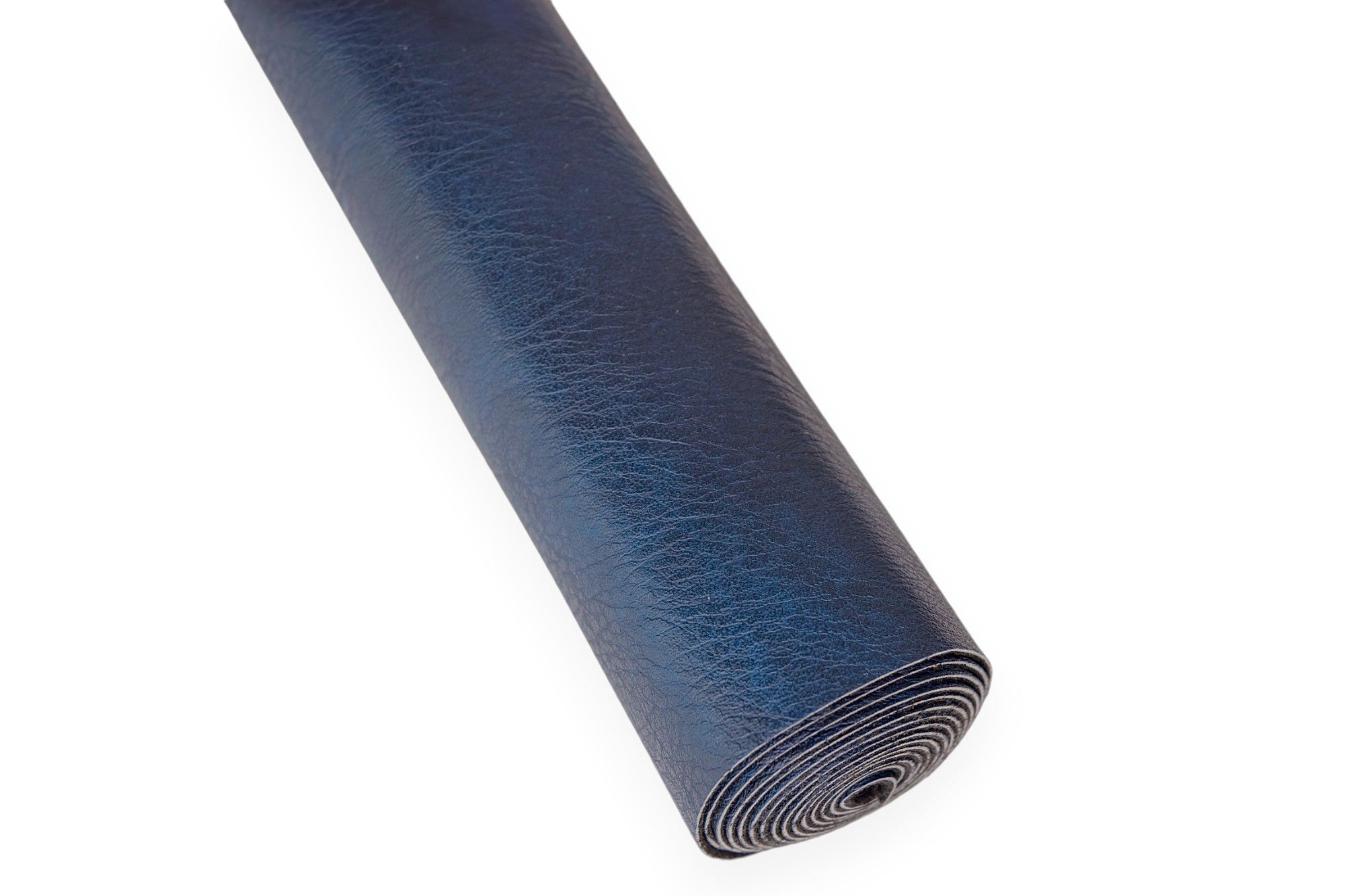
Illustrative image related to faux leather by the roll


